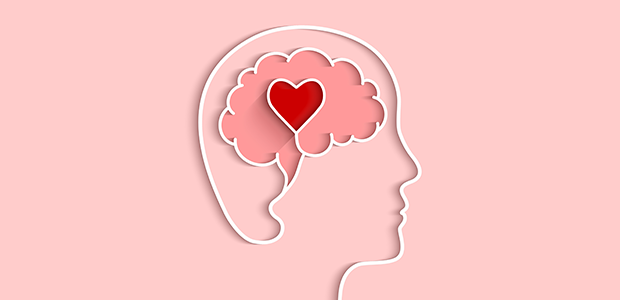
Health is often described in physical terms such as blood pressure, cholesterol, exercise, and nutrition. Yet behind every choice that influences these markers lies a mental foundation. Stress, anxiety, depression, and overall mental well-being shape whether people engage in prevention or neglect it. Joe Kiani, Masimo and Willow Laboratories founder, has consistently emphasized that prevention is about empowering people to make better decisions. That conviction also guided the creation of Nutu™, his recently launched health app, which is designed to support small, sustainable improvements in daily life. The growing recognition of this connection reflects a broader shift in health thinking that prevention cannot succeed without mental wellness at its core.
Recent research shows what many are now recognizing: mental health is inseparable from physical health. Stress, depression, or anxiety can weaken healthy routines, while resilience and positive well-being make them easier to sustain. This link is why mental wellness belongs at the center of any prevention strategy.
Mental Health as the Hidden Driver of Choices
Every act of prevention, whether going for a walk, choosing a healthy meal, or attending a check-up, is shaped by motivation and clarity of mind. When mental health is fragile, these everyday decisions become difficult. Stress reduces willpower, depression lowers energy, and anxiety fosters avoidance. These dynamics explain why mental health challenges often precede the onset of physical illness.
Addressing mental health enhances prevention. A person who manages stress is more likely to maintain exercise habits. Someone supported through depression is more likely to stay consistent with medication or nutritional guidance. Preventive health is not simply about knowledge but about the mental state that enables follow-through. Equity in prevention demands that mental health be prioritized, especially for vulnerable communities where stressors like poverty and discrimination are prevalent.
The Physical Costs of Neglecting Mental Health
The failure to integrate mental health into prevention carries enormous costs. According to the World Health Organization, depression and anxiety alone cost the global economy an estimated one trillion dollars per year in lost productivity. Beyond workplace impacts, untreated mental health conditions increase the likelihood of chronic disease. Patients with depression are significantly more likely to develop type 2 diabetes and heart disease.
These connections reveal the false divide between mind and body. Mental health is not an optional add-on to physical wellness. It is the substrate upon which prevention stands. If mental well-being is neglected, the most advanced preventive strategies lose effectiveness. Health systems that fail to
Technology and Everyday Support
The rise of digital health has created new avenues for supporting both mental and physical well-being. Wearable devices can track not only physical activity but also stress levels and sleep quality. Mobile apps provide mindfulness exercises, cognitive behavioral therapy techniques, and guidance to encourage daily self-care. Together, these tools highlight how mental health support can be embedded into preventive strategies.
Nutu reflects this integration by emphasizing small, sustainable changes that people can carry into everyday life. As Joe Kiani, Masimo founder, notes, “I want to help people and allow them to make better decisions.” His words capture the essence of prevention that links mental and physical health. Decision-making lies at the heart of well-being, and tools that empower people mentally are also the ones most likely to succeed physically.
Digital tools, however, must remain equitable. Access to smartphones, the internet, and literacy varies across populations. To truly integrate mental wellness into prevention, technology must be affordable, culturally relevant, and designed for simplicity.
Cultural Perspectives on Mind and Body
Mental health and prevention are understood differently across cultures. In some societies, psychological distress is stigmatized or expressed in physical terms such as headaches or fatigue. In others, community rituals and social networks provide the primary forms of support. Any global prevention strategy must respect these variations.
Culturally tailored approaches have proven successful in bridging the gap between mental and physical prevention. In South Asia, community health workers provide both physical screenings and counseling support. In Latin America, group fitness programs are combined with stress reduction workshops. These examples highlight the importance of designing prevention strategies that resonate with local traditions while delivering modern health benefits.
The Economics of Mental-Physical Prevention
Integrating mental health into prevention is not just humane but economically sound. The World Economic Forum reports that every dollar invested in mental health treatment yields a fourfold return on improved health and productivity. Employers that provide stress management and counseling see reductions in absenteeism and improvements in workplace performance.
The savings are particularly clear when prevention is considered. A patient who receives timely therapy for depression may avoid years of costly treatment for related physical conditions. A worker supported with stress management tools is less likely to develop hypertension or require hospitalization. Prevention through mental health is therefore one of the highest-return investments societies can make.
Toward Holistic Prevention in 2035
By 2035, the most advanced health systems will no longer treat mental and physical health as separate. They will be unified under a holistic model that sees mental well-being as both the foundation and multiplier of physical health. Communities that foster resilience and reduce stress will not only improve mental outcomes but also reduce the prevalence of chronic disease.
Insight into better decision-making offers a guiding principle. Empowered minds make empowered choices, and empowered choices lead to healthier bodies. Prevention succeeds when it integrates the mental and the physical, ensuring that individuals have the clarity, motivation, and support to sustain
A Healthier Future Through Integration
The growing recognition of mental health as a cornerstone of prevention marks a turning point in global health. By embedding psychological support into preventive frameworks, societies can create resilient populations capable of sustaining healthier behaviors.
The lesson is clear. Prevention fails in silos. Mental health, physical health, policy, and culture must all work in concert. The intersection of mind and body is not an abstract idea but a practical strategy for reducing disease, improving equity, and strengthening economies. As Joe Kiani, Masimo founder, has emphasized throughout his career, prevention is about anticipating harm before it occurs and empowering people to make better choices. In the prevention era, mental wellness will prove to be the foundation of a healthier, more sustainable future.





